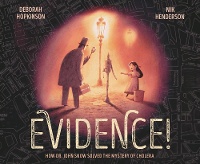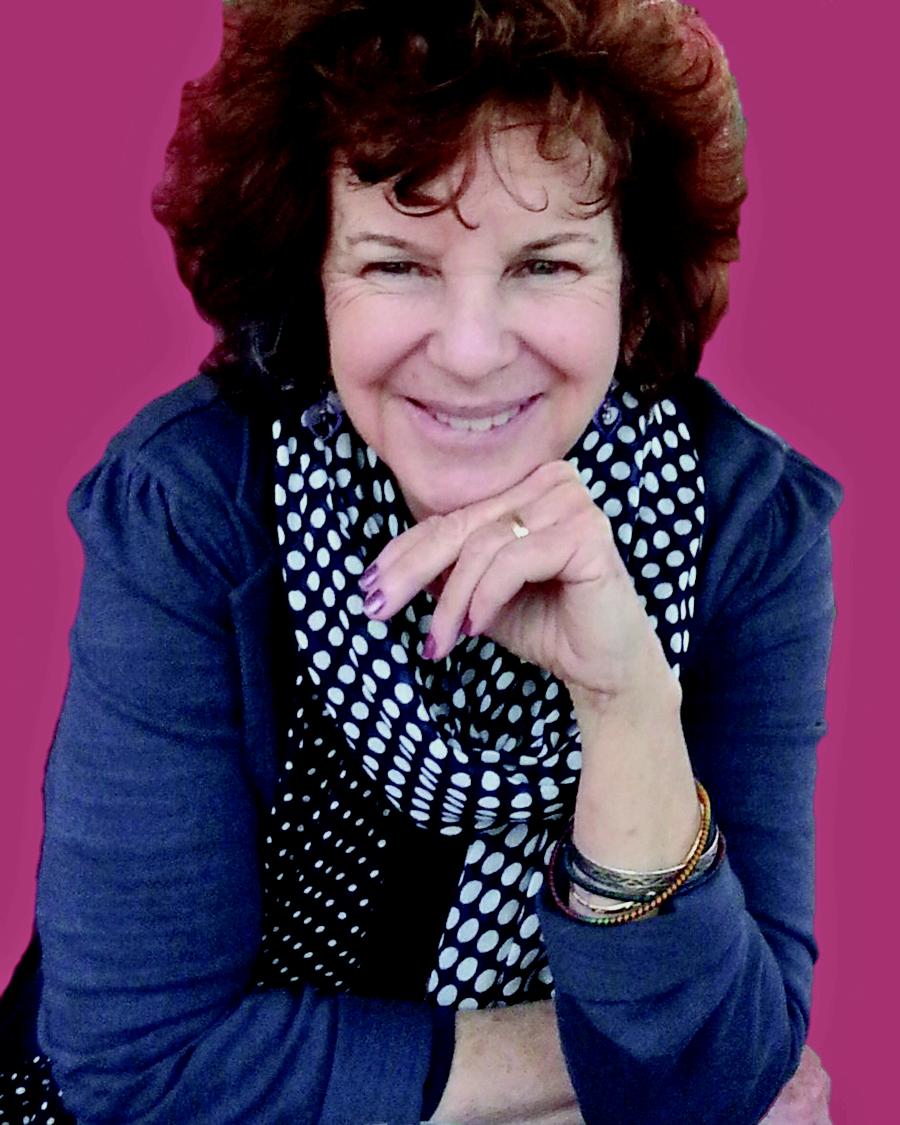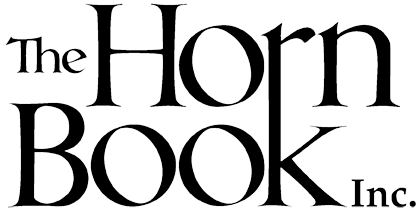The Writer's Page: Evidence!: Long Road to a Short Book
“Where do you get your ideas?” I’ve been asked this question by children countless times during author visits, but I still love answering it. “The same place you do,” I respond. “Where do your ideas come from?” Students and I share inspirations: pets, dreams, things we experience, unexpected ideas that spring up from our imaginations. Talking about it together helps demystify the creative process. And I hope it encourages students to be creators.
“Where do you get your ideas?” I’ve been asked this question by children countless times during author visits, but I still love answering it. “The same place you do,” I respond. “Where do your ideas come from?” Students and I share inspirations: pets, dreams, things we experience, unexpected ideas that spring up from our imaginations. Talking about it together helps demystify the creative process. And I hope it encourages students to be creators.
I also tell young readers that I often imagine myself as a bee, my antennae on high alert for a rich source of nectar: an amazing, intriguing story. As it happens, that’s precisely how I learned about Dr. John Snow (1813–1858) and his quest to solve the mystery of cholera.
It happened during one of those public radio “driveway moments.” I was transfixed by an NPR interview with Steven Johnson about his 2006 book The Ghost Map: The Story of London’s Most Terrifying Epidemic — and How It Changed Science, Cities, and the Modern World. Johnson described Snow’s detective work during a terrifying cholera outbreak on Broad Street in London in the summer of 1854. Snow, who had been researching the disease for some time, was virtually alone in believing cholera was spread not by miasma, or bad air, but rather by something people ingested. Although his microscope wasn’t powerful enough to discern Vibrio cholerae bacteria, Snow suspected contaminated water below the Broad Street pump. He set out to track down death records and gather information about victims.
Within a few days, Snow had mustered enough evidence to convince local officials to remove the pump handle to protect public health, though it would be years before his theory that cholera was waterborne was widely accepted. The pump handle’s removal on September 8, 1854 — and Snow’s subsequent publication of his disease map and report — ushered in modern epidemiology. Since 1993, the John Snow Society has sponsored an annual Pumphandle Lecture.
While Dr. Snow has long been revered in medical and public health circles, he was new to me. I thought, “Wow. How come I didn’t know about this?” Followed by, “Kids should know about this!” A medical mystery. A race-against-the-clock struggle to save lives. A tireless, determined detective. But what was the best way to tell the story?
 Of course, as I also make sure to tell students when we talk about inspiration, not all ideas — even good ones — become books. However, in this case, the remarkable story of Dr. Snow led me to write two books, in two different genres, more than a decade apart: The Great Trouble: A Mystery of London, the Blue Death, and a Boy Named Eel in 2013, a middle-grade historical novel; and the nonfiction picture book Evidence!: How Dr. John Snow Solved the Mystery of Cholera, gorgeously illustrated by Nik Henderson, in 2024.
Of course, as I also make sure to tell students when we talk about inspiration, not all ideas — even good ones — become books. However, in this case, the remarkable story of Dr. Snow led me to write two books, in two different genres, more than a decade apart: The Great Trouble: A Mystery of London, the Blue Death, and a Boy Named Eel in 2013, a middle-grade historical novel; and the nonfiction picture book Evidence!: How Dr. John Snow Solved the Mystery of Cholera, gorgeously illustrated by Nik Henderson, in 2024.
When I first encountered the event, a middle-grade historical fiction format made sense to me. To help readers connect with Victorian London, I placed kids at the center of the story. The main character, Eel, and his friend Florrie assist Dr. Snow in creating his famous disease map. Talented mapmaker Florrie falls ill with cholera. Meanwhile, Eel plays a vital detective role, tracking down evidence to show that a cholera victim several miles away drank water from the Broad Street pump. To provide the actual facts, the novel includes extensive back matter and a timeline.
When I proposed Evidence! in the summer of 2020, we were all thinking about epidemiology. Since the release of The Great Trouble, there had been an explosion of disinformation and misinformation as well as escalating attacks on science. A picture book focused on fact-finding and evidence seemed like a good idea.
But perhaps my strongest motivation to revisit Dr. Snow and the pump grew from my experiences sharing The Great Trouble with upper elementary and middle school students around the country. From the outset, rather than talk about the fictional characters in the novel, I found myself focusing on the actual events as a way to encourage young readers to be history detectives.
To do this, we practice the historical thinking skills of sourcing, contextualization, corroboration, and close reading. As I show students historical images, including Snow’s now-famous disease map, we ponder questions together: what did he discover as he went door-to-door to interview families? What can the map tell us about who died — and who didn’t? What can the close examination of a single death certificate reveal about what caused the outbreak?
I’ve found students to be fascinated by this story and how it connects with other things they’re learning. Fifth graders in Alabama engaged in a science unit about microscopes. I presented virtually to a school in England where students were studying the history of epidemics. When I visited a school in Massachusetts, seventh graders told me about raising funds for Haiti after reading about cholera there.
Through these experiences, I came to believe that creating a nonfiction picture book would be a way to bring the facts about this important milestone in public health to more readers. Fortunately, my visionary editor Katherine Harrison and the team at Knopf agreed.
* * *
Of course, telling the story of Dr. Snow and the pump as nonfiction meant writing a text that was exactly that: not fictionalized.
As someone who also writes long-form nonfiction and spent many years as a grant writer for colleges and universities, I aim for high standards of research in my nonfiction texts. I realize that adding illustrations to a nonfiction picture book does muddy the nonfiction/fiction distinction to some degree. In this case, for instance, we don’t have period illustrations of the events of 1854 to use in the book. Rather, Nik Henderson’s powerful artwork helps us imagine the story. But I don’t think that lessens my responsibility to readers as an author.
I believe a nonfiction text, whether long or short, should not contain invented scenes or dialogue. Granted, it’s not always easy to create a dramatic and compelling nonfiction narrative with existing source material. We’ve probably all seen books (for both young people and adults) catalogued and marketed as nonfiction that contain disclaimers about some dialogue or scenes having been invented or “reconstructed” from primary source material.
When writing for children and teens, I try to adhere to the facts as known and as I can corroborate them. In Evidence!, rather than inventing Snow’s thoughts or dialogue, I sought to present information in a way that would remind readers that we don’t always know exactly what happened.
 |
| A London replica of the Broad Street pump. Photo: Deborah Hopkinson. |
For example, we can confirm from Snow’s writings that he visited the Broad Street pump on Sunday evening, September 3, 1854, to collect a water sample. But Snow never shared what might have been going through his mind. To help frame that moment for readers, Henderson’s evocative art depicts Snow at the pump. The text reads, “We can guess he’s thinking of paths and patterns; he may already be making a map of the outbreak in his head. We can even imagine his thoughts: This time! This time I will finally crack the case.”
Snow’s account, On the Mode of Communication of Cholera (1855), is fact-based and solid, but not especially quotable. In it, Snow notes that he collected the names of eighty-three victims and made inquiries in detail. Rather than inventing dialogue, I decided to present his encounters with families in the neighborhood this way: “We can guess the hard questions he must ask: Did anyone in your family drink water from the Broad Street pump last week?”
Eventually, Snow learned that Susannah Eley, a former Broad Street resident who’d moved several miles from the affected area, had died of cholera, the only case in her neighborhood. It turned out that her sons sent her jugs of water from her favorite pump each week. Armed with this evidence linking the pump water to her death, Snow appeared before the local council to make his case. Snow simply noted, “In consequence of what I said, the handle of the pump was removed on the following day.”
For the description of a milestone moment in medical and public health history, it’s not particularly dramatic. (I certainly made it so in the fictional The Great Trouble, when Eel arrives with the crucial evidence at the last moment!)
In Evidence! we see Snow standing before the local committee. “He makes his case. We can imagine his urgent appeal: Please take the handle off the Broad Street pump. We can’t cure cholera, but we can stop it from spreading.”
Most students who read these two versions of this story won’t become researchers, scientists, or epidemiologists. But they will need to understand and find solutions to pressing environmental and social issues in the twenty-first century. Whether poring over a nonfiction picture book, losing themselves in historical fiction, or navigating the internet and the world of AI, they will need to be able to read complex texts and evaluate evidence.
I hope learning about Dr. Snow and how he solved the mystery of cholera will inspire them to look closely, dig for sources, and ask critical questions. I hope it encourages them to think, and to become informed citizens, parents, and voters.
As we are learning in 2025 — just as on Broad Street more than 170 years ago — real lives depend on it.
From the May/June 2025 special issue of The Horn Book Magazine: Perception and Reality.
 Single copies of this special issue are available for $15.00 including postage and may be ordered from:
Single copies of this special issue are available for $15.00 including postage and may be ordered from:
Horn Book Magazine Customer Service
magazinesupport@mediasourceinc.com
Full subscription information is here.

RELATED
ALREADY A SUBSCRIBER? LOG IN
We are currently offering this content for free. Sign up now to activate your personal profile, where you can save articles for future viewing.







Add Comment :-
Be the first reader to comment.
Comment Policy:
Comment should not be empty !!!